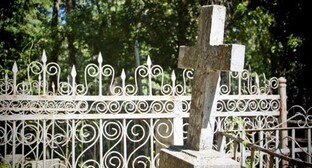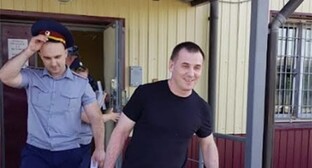21 April 2003, 00:51
Geographic position and natural resources of Krasnodar Territory
Krasnodar Territory (the other name of the region - Kuban) is located in the south of Russia; on the southwest is washed by the Black Sea, on the northwest - by the Azov Sea and Kerch Strait. Borders on Rostov region, Stavropol Territory, Karachay-Cherkess Republic. The territory has inner borders with Adygey Republic that separated in 1991 from a central part of the territory and became an independent subject of federation (formerly Adygey autonomous region).
After the collapse of the USSR Krasnodar Territory became border territory, it has a sea border with Ukraine and overland border with Georgia. The problem of delimitation and demarcation of borders with adjacent CIS states is not yet resolved.
Overall length of state border - 1540 km, including sea border - 740 km. The length of the territory from the north to the south - 372 km, from the west to the east - 380 km. Distance from Krasnodar to Moscow - 1539 km.
The relief of the territory is quite various. The main river Kuban divides the territory into two parts: northern - lowland terrain of Kuban-Priazovskaya lowland (2/3 of the territory), and southern - highland terrain with the mountain ranges of the Large Caucasus. The climate is mostly moderately continental, and on the Black Sea coast (to the south of Tuapse) - subtropical. Average temperature of January in plain is from -3 to -5?C, and in July - from +22 to +24?C. The favourable period for recreation and tourism lasts for 150 - 180 days, bathing season - 4.5 months (from June to the middle of October). Water reservoirs belong to the basins of the Black and Azov Seas, there are 13 thousand large and small rivers. Very important for the economy of the region are underground waters: for example, Krasnodar receives water from 15 wells from depth of 500 m and more. Water from the basin of the Kuban river used for needs of rice sowing is extremely contaminated and because of that the quality of water consumed by the population has decreased. There are more than 600 lakes and 15 water-storage basins, the largest of them is Krasnodar water-storage basin (400 sq km).
The territory is divided into three natural zones - steppe, foothills and mountains. The north and northwest parts are occupied by fertile chernozem and chestnut soils widely used in agriculture. The total area of forests in the territory is more than 1200 thousand ha, valuable oak and beech forests are of industrial importance (70% of the forest area).
60 types of mineral resources are found in the territory that are mostly located in mountain and foothill regions. The major resources are oil and gas. Kuban belongs to oldest oil and gas regions of Russia. The reserves of Kuban oil are small, but it has very good properties (contains little sulphur), therefore is used for production of valuable aviation oil. At old fields the production of oil is reduced (Apsheron region).
Over 100 small oil and gas fields are developed. Balance reserves of oil in the 90-s have not practically changed: 320 million tons (for 1990 - 1994), and the oil production has decreased - from 1.9 million tons in 1990 to 1.5 - 1.6 million tons in 1994 - 1997 (together with condensate). The level of gas production has also decreased: in 1994 - 2.1 billion cubic metres, in 1996 - 1998 - 1.7 - 1.9 billion cubic metres. The specialists connect the main prospects of preservation of the level of oil and gas production in Krasnodar Territory with extended exploitation of Anastasiyevsko-Troitskoye field (Krymsk), where almost 23% of free gas reserves of all North Caucasian region is located. In this case the level of oil production can be increased to 2 million tons per year, and gas production - to 4 billion cubic metres.
Among other resources building materials (marble, gypsum, clay, sand, limestone, marl, dolomite), copper, iron and apatite ore, rock-salt are most important.
There are more than 250 fields of building materials in industrial development. The amount of annual production is more than 20 million cubic metres. The largest opencasts - in control of "Krasnodaravtodor", Shchedoksky gypsum centre, Psebay plant of building materials.
Valuable natural resource widely used in the territory - medical muds (under Anapa), as well as mineral (iodine-bromide, hydro sulphuric, etc.) and thermal waters (in Matsesta, Goryachy Kliuch, Apsheron and Belorechensk regions).
Source: I.G. Kosikov, L.S. Kosikova. North Caucasia: Social and Economic Reference Book




